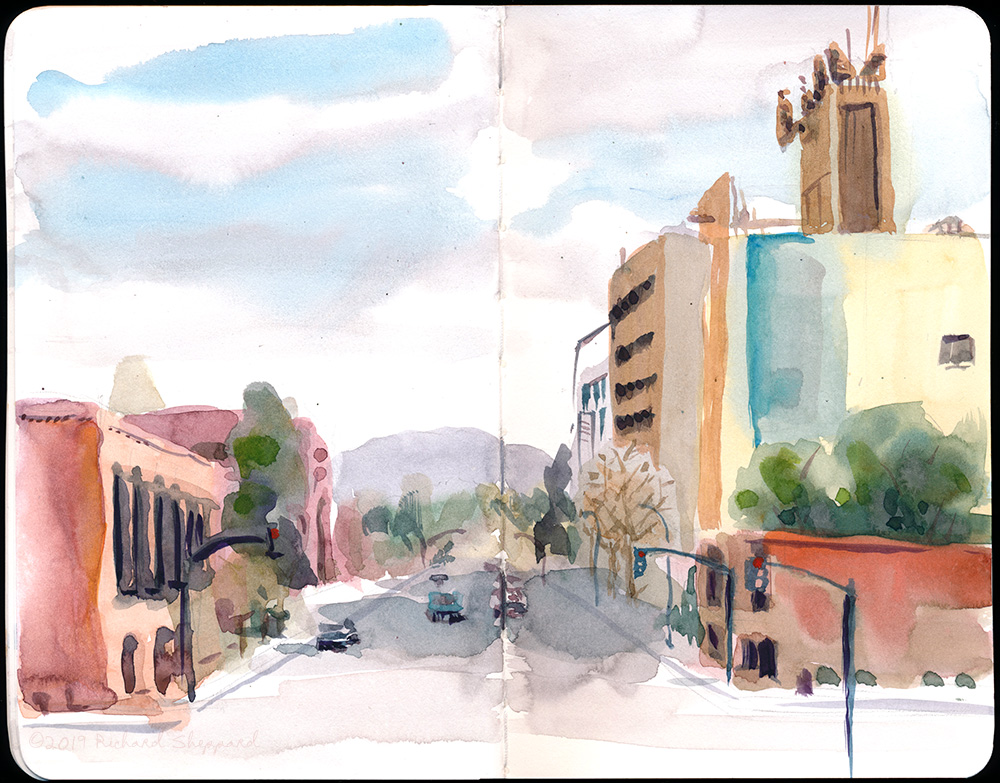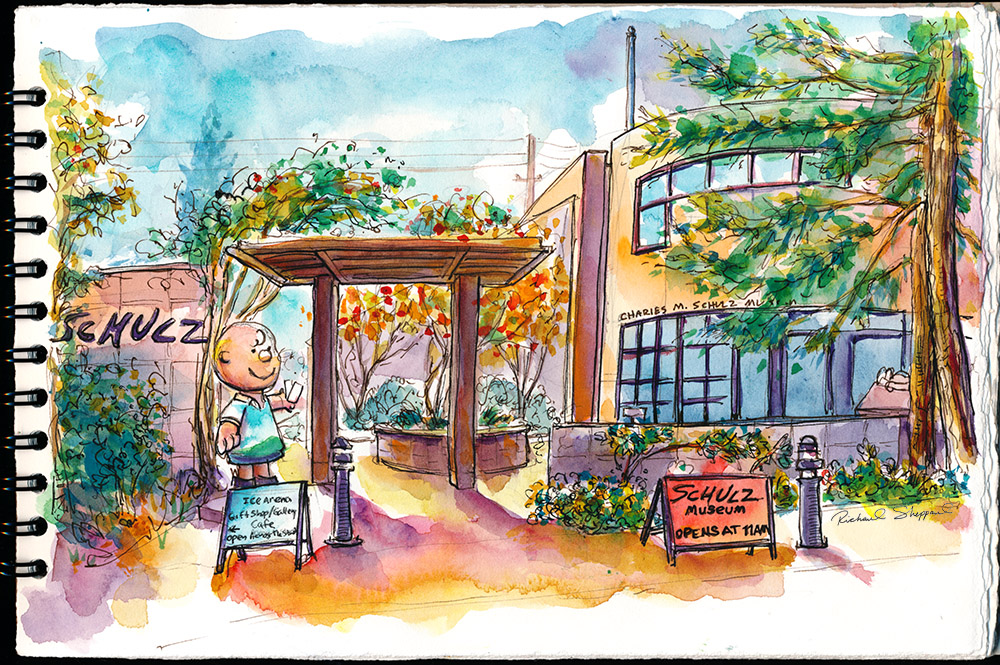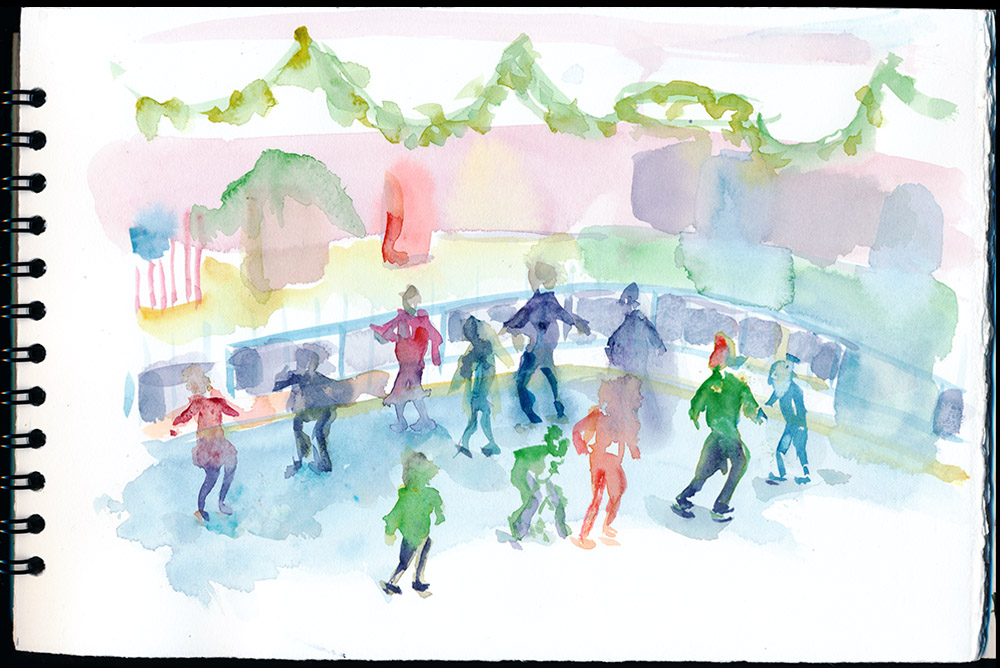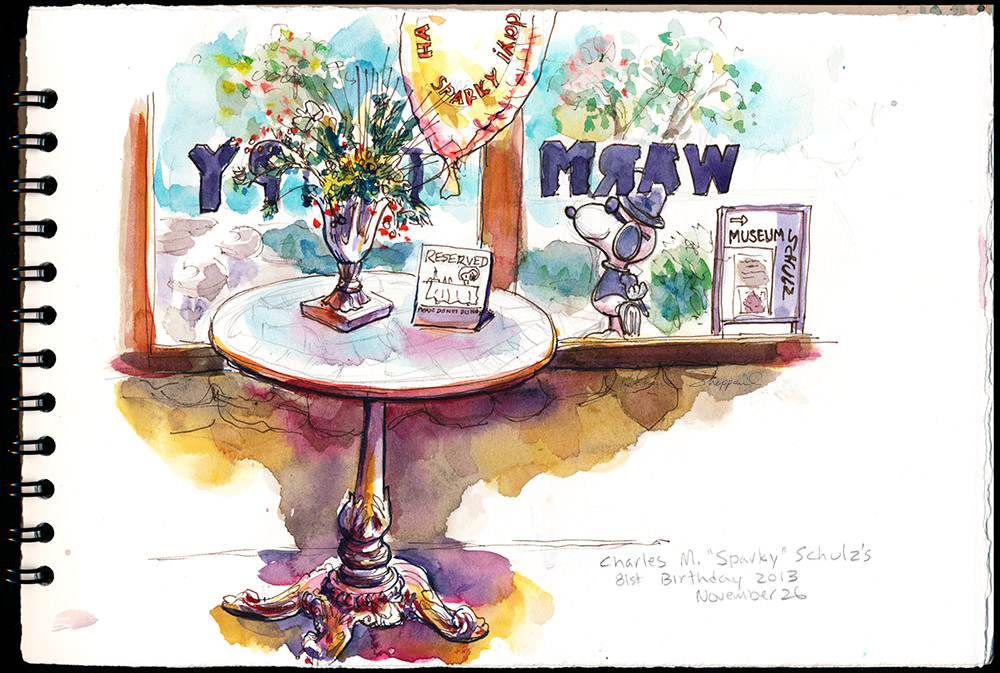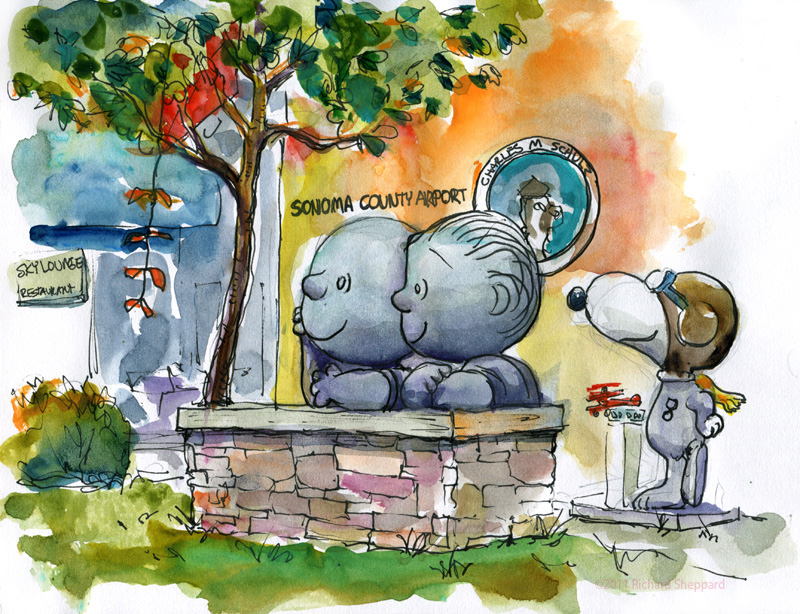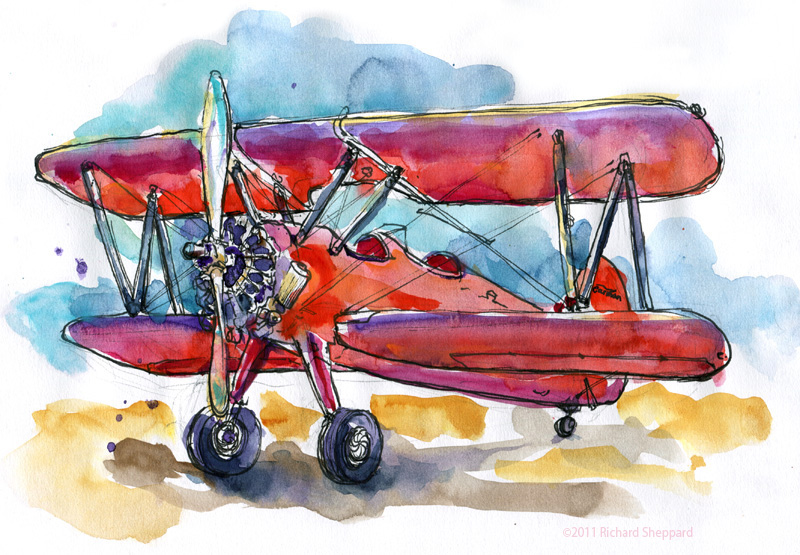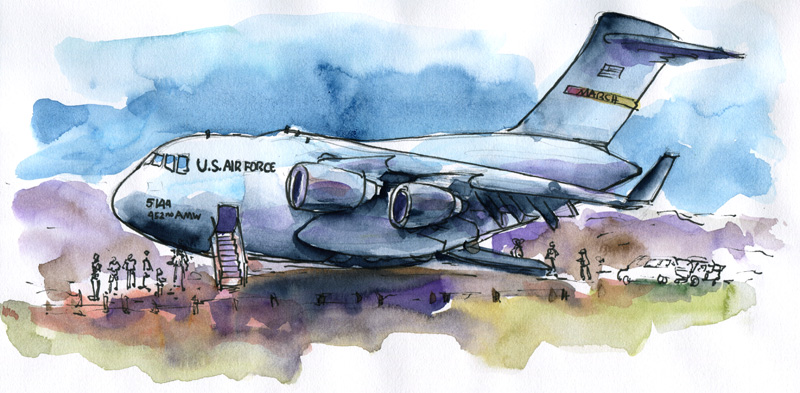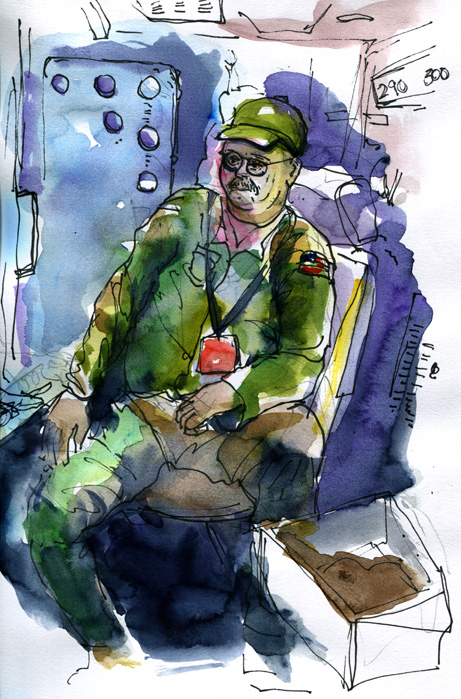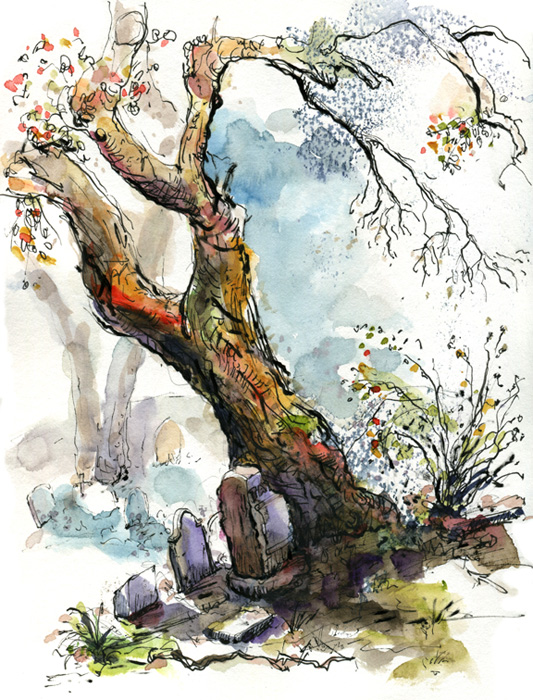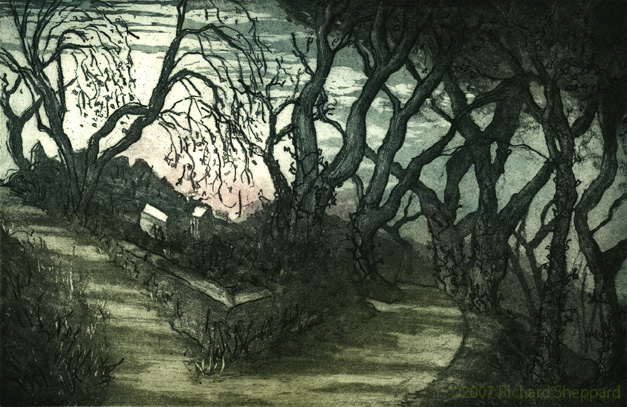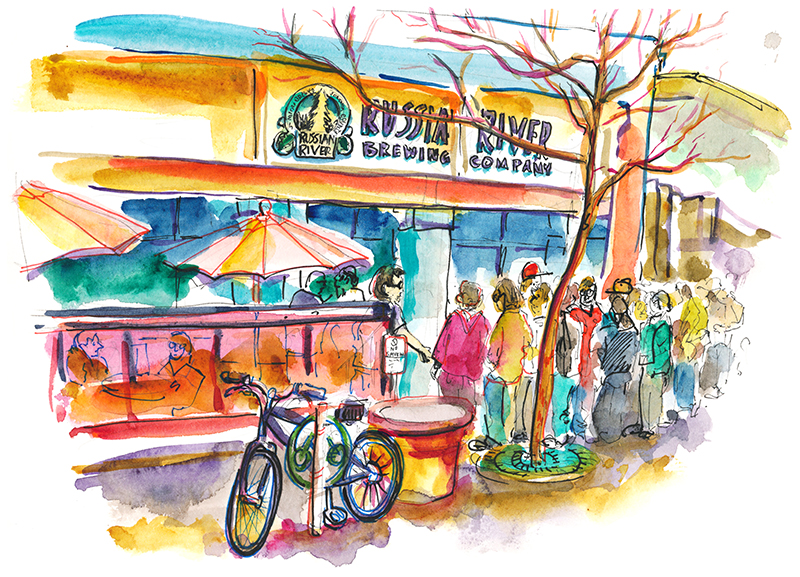
Each February, Russian River Brewery in Santa Rosa releases their award winning beer, Pliny the Younger. In 2009, Beer Advocate magazine declared it one of the best beers in the world, and the buzz has been growing ever since. Beer lovers line up for hours to get their hands on a 10oz glass of this gold colored bliss. But to my thinking, “it’s just a beer, isn’t it?â€
Well, yesterday my friend Phil and I decided to taste the beer for ourselves and made the 10 mile trek to the brewery. We drove up at 1 pm to find a block-long crowd, so I got in line while Phil found parking. The aroma of malt drifted in the air. I had a flashback then of high school days, and the excitement of standing in line for rock concert tickets.
We took turns waiting and sketching. During my shift, I chose to capture the action at the pub’s entrance.
An hour later, a group of hula hooping women arrived to entertain the patient crowd, boom box thumping hip hop as they twisted and rolled to the beat. Two hours later we arrived at the patio gate entrance, each patron’s ID carefully scrutinized, even grey haired men. After receiving our bright yellow wrist band, hand scrawled with the word Pliny, we entered to find yet another checkpoint just inside. “Would you like to put your name on the list for a table?†The hostess asked us. We had come seeking beer and lunch; now, approaching dinner time, we decided to go with the flow.
“There should be about a 45 minute wait,” the hostess informed us. At this point, we figured, what the heck?
At first the crowd and noise overwhelmed, but we soon settled into the rhythm of the place. The bar was surrounded two people deep, but somehow we made it up to order two coveted Plinys. Raising chilled glasses, we toasted our diligence and each took a sip of the golden liquid. “Delicious!” I proclaimed and Phil agreed. Pliny the Younger is a triple hopped pale ale with a creamy head and the freshest hops I’ve ever tasted with none of the bitterness I expected, but instead balanced and silky smooth with citrus notes and a bright, flowery nose and the hint of a caramel finish.
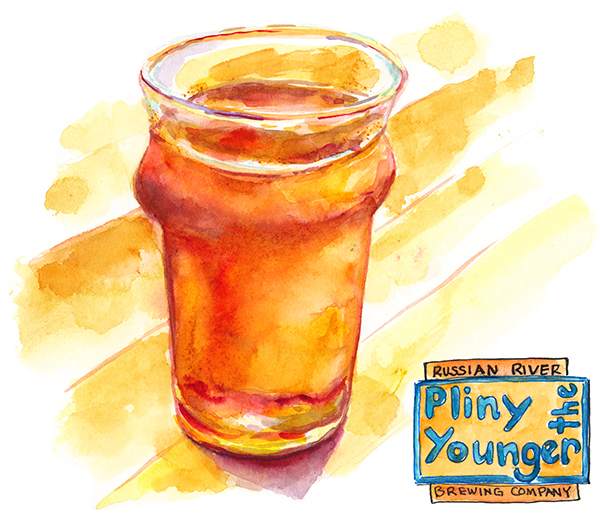
A woman, introducing herself as Merry (“as in Christmas”) Sue, asked if she could set down her glass on the counter beside us. We all traded notes on the beer and on what we’d experienced to taste it, agreeing that it was worth it.
Thirty minutes later we ordered a pizza, a plate of spicy wings, and another round of Pliny. The first bite of pepperoni and sausage dotted pizza revealed perfectly fused crust, sauce, and cheese. The hot and tangy wings left my mouth watering, and we devoured these too, using Pliny to cool our mouths.
As afternoon turned into evening, we paid the bill knowing it was time to head home. But considering the time it took to get in the brewery and how much fun we had while here, it seemed a shame to leave so soon.
